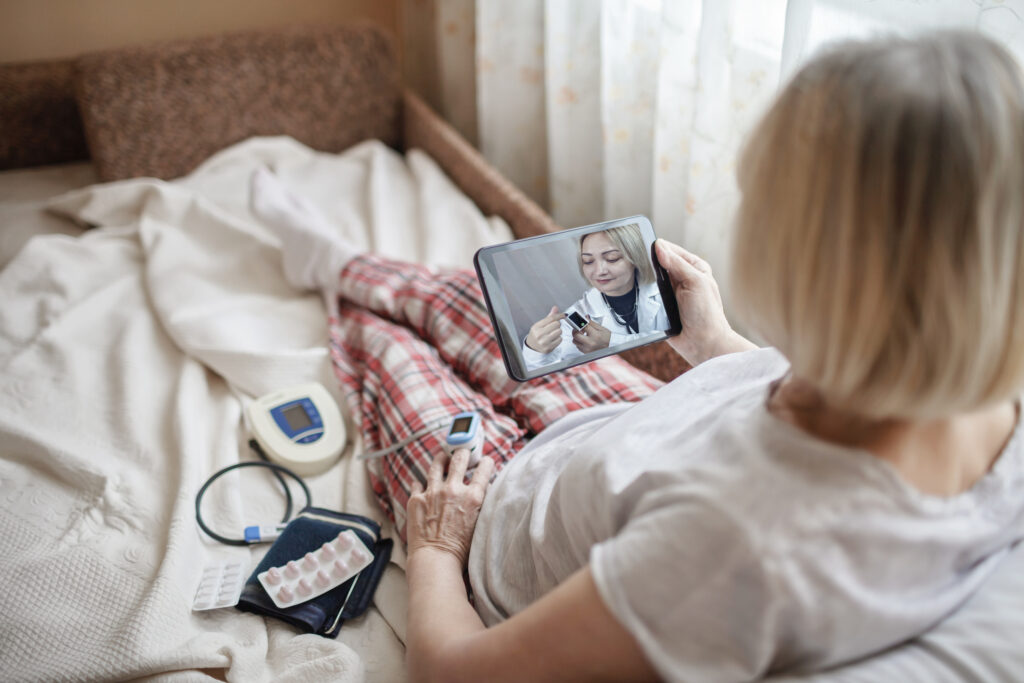Remote patient monitoring (RPM) was a welcome addition to patient care in a time of social distancing. Now that many places are beginning to open back up, and mask mandates are going away, healthcare providers are reviewing their data to see how effective these RPM programs have been — and whether they’re worth continuing. Based on those findings, we’re confident that RPM is here to stay. But let’s dig a little deeper into why by addressing a few important factors.
1. Reimbursements for Value-Based Care Mean Additional Income for Practices
The Centers for Medicare and Medicaid Services (CMS) has already noted how a well-managed RPM program can be part of value-based care. Additionally, “remote patient care will account for about $250 billion (about 20%) of what Medicare, Medicaid, and commercial insurers spend on outpatient, office, and home health visits in the near future.” And with CMS approving reimbursements of $120 per patient per month, doctors’ offices have a source of additional revenue that’s available to them if they choose to adopt an RPM program.
2. Improved Health Equity
Many people suffering from acute or chronic symptoms may not be able to be physically present for medical appointments. Healthcare IT Today highlights how this is often due to limited transportation, extended travel distance, and lower income. But RPM devices mean fewer in-person appointments are necessary, while simultaneously improving providers’ abilities to monitor patients’ vitals and intervene when concerning symptoms first appear. These patients now have the means to receive quality medical care, which can help close the gap in health equity.
3. Reduced Hospital Usage
Over the past two years, the COVID-19 pandemic overwhelmed hospital systems across the US. Many hit full capacity and needed to send patients elsewhere for treatment. But the implementation of RPM has since allowed for more home-based care, freeing up available in-house space to treat those patients exhibiting concerning or life-threatening symptoms. It also allows patients who may be immunocompromised to socially distance or isolate in order to avoid infection.
In addition to increasing hospital bed inventory, adding an RPM system to your organization also allows for earlier intervention, which means that you — and your patients — save money by avoiding costly healthcare expenses.
4. Better Results for Chronic Care Management
Another effect of the pandemic was that many patients suffering from chronic disease delayed their care. Either this was by choice, or as a result of lockdowns and limited available healthcare services. But those delays are very problematic, especially if these unmonitored conditions worsened during that time. And the costs quickly add up, notes Healthcare IT News in a recent Q&A: “Chronic conditions account for 75 cents of every $1 spent in healthcare. This issue is that most of these patients have no tools to manage their condition and instead frequent the doctor’s office.”
By implementing RPM devices, healthcare providers have an early warning system to help patients manage their care more effectively, and reduce long-term complications — to patients and providers alike — from frequent emergency room visits due to deteriorating health.
Additional Staffing Hours Needed
RPM generates a substantial amount of patient data that needs to be reviewed and stored appropriately. But many practices may lack the available staff to perform this function, either because of budgeting or nursing shortages. That’s where TriageLogic can help: we offer 24/7 RPM data review and patient follow-up with registered telehealth triage nurses from our call center.
Have You Implemented RPM?
Have you already implemented an RPM program, or are you considering one? If you ever need assistance managing the review of its data, and improving the health outcomes of your patients, we’re here to help. TriageLogic offers a turnkey solution for your patients. Once you sign up, we take care of sending the devices, helping patients use them, and monitor the data for you. We will only send you the patients that require an evaluation from a medical doctor. Contact us to get started and learn how easy it is to implement a successful program with us.
About TriageLogic
TriageLogic is a URAC-accredited, physician-led provider of top-quality nurse telehealth technology, remote patient monitoring, and medical call center solutions. Founded in 2007, the TriageLogic Group now serves more than 9,000 physicians and covers over 25 million lives nationwide.





